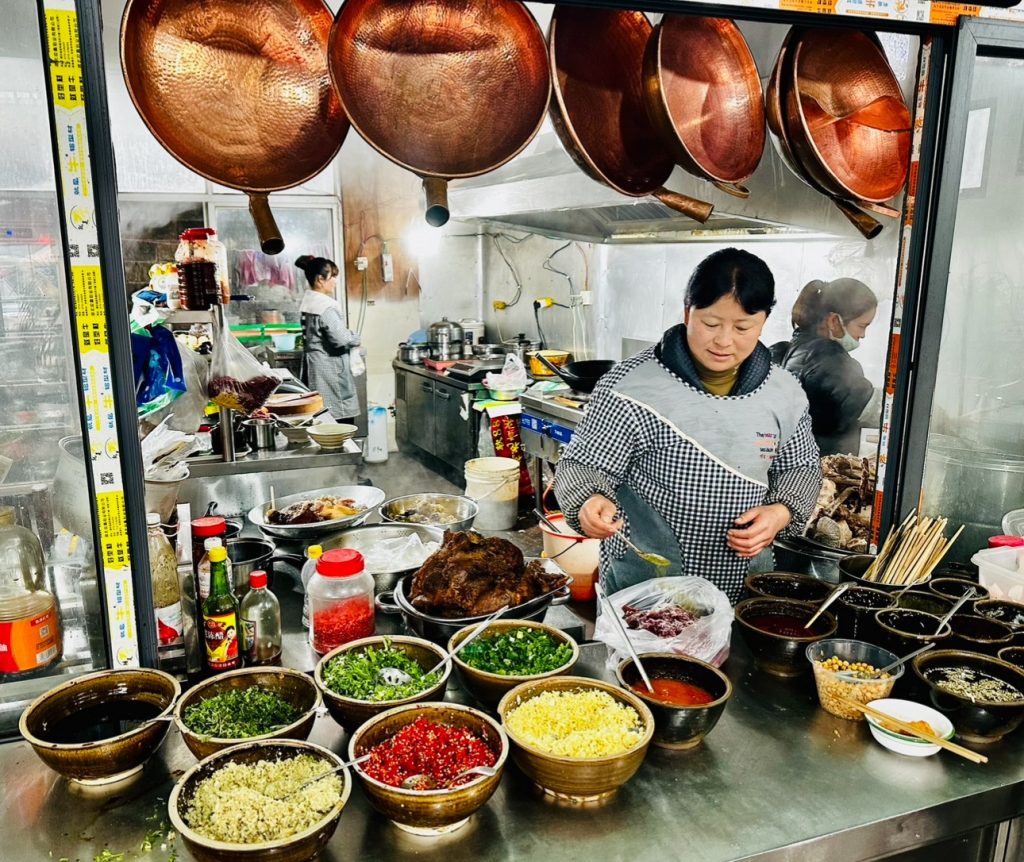
In this week’s blog I’d like to open up a discussion in which all SACU members can take part – what are the ‘Top Five’ Chinese recipes?
Food really is a fundamental part of Chinese culture in a way that it seems to me is closer to Italy than Britain. If I ever want to coax my students to forget their shyness and speak torrents of English, I just have to open up a discussion like the one we’ve started now.
Let’s see if I can start a SACU debate in the same way. What follows is my very personal list of five favourites, but I’m putting the list out there hoping to have it challenged and contested by the superior taste-buds of SACU members everywhere.
China has 5000 years of cultural development behind its cuisine. The earliest evidence of cooking and consuming rice dates back to the Upper Paleolithic period, between 12,000 and 16,000 years ago! Archaeologists recovered four grains of rice from the Yuchanyan Cave, a rock shelter in Dao County, Hunan Province in China.
Furthermore, there is evidence to suggest that the art of noodle making started 4,000 years ago in the late Neolithic period in northern China, according to the evidence of a prehistoric sample of noodles contained in a well preserved, sealed earthenware bowl. And I’m sure we all remember those eloquent sequences in Michael Wood’s ‘Story of China’, where he extols the food culture of Song Dynasty Kaifeng:
‘Thanks to improved agriculture and distribution, Song cooks had a bigger range of ingredients than ever before and they developed the first great restaurant culture in the world, complete with cookbooks, gourmet diaries and guides to dining etiquette’
Just as a reminder, the Song Dynasty flourished in the tenth to the thirteenth centuries CE!
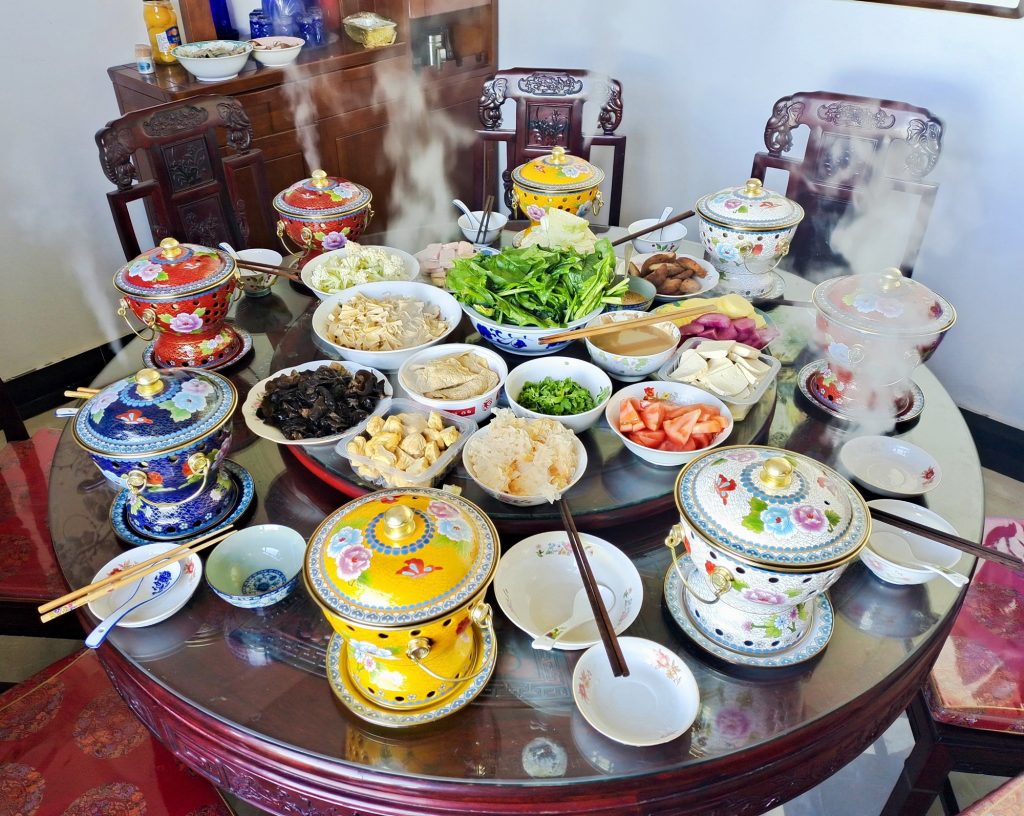
What are your favourites?
And it’s not just the history behind Chinese cuisine that is impressive, it’s the geography! Every village, every town, every region in this nearly four million square mile country has its own culinary speciality. Traditionally there are eight recognised regional cuisines. These are Shandong Cuisine: fresh and salty with a lot of seafood dishes ; Sichuan and Hunan cuisines: hot and spicy ; Guangdong (Cantonese), Zhejiang and Jiangsu cuisines: great seafood with generally sweet and light flavours and Anhui and Fujian cuisines which include lots of wild foods from the local mountains.
But there’s more – to this you have add the amazing range of culinary traditions from the 55 different ethnic minority groups in China. Personally speaking the very best foodie experiences I’ve had in China have been roadside meals prepared by local people in villages in rural Yunnan, Guizhou and Zhejiang, dishes I can’t remember the names of, but with the most wonderful fusions of fresh local flavours created from deep traditions of local knowledge.
But, this being said, I’m now going to bite the bullet, stick my head above the parapet and name my ‘Top Five’. Sadly some of these dishes will not be available in your local Chinese restaurant with its focus on Cantonese cuisine, but if you search them out there are a growing number of restaurants in the UK offering a wider range of dishes. I know from shopping experiences in London, that the ingredients for many of these dishes are available in Chinese supermarkets, so who knows, you might have some kitchen inspiration of your own.
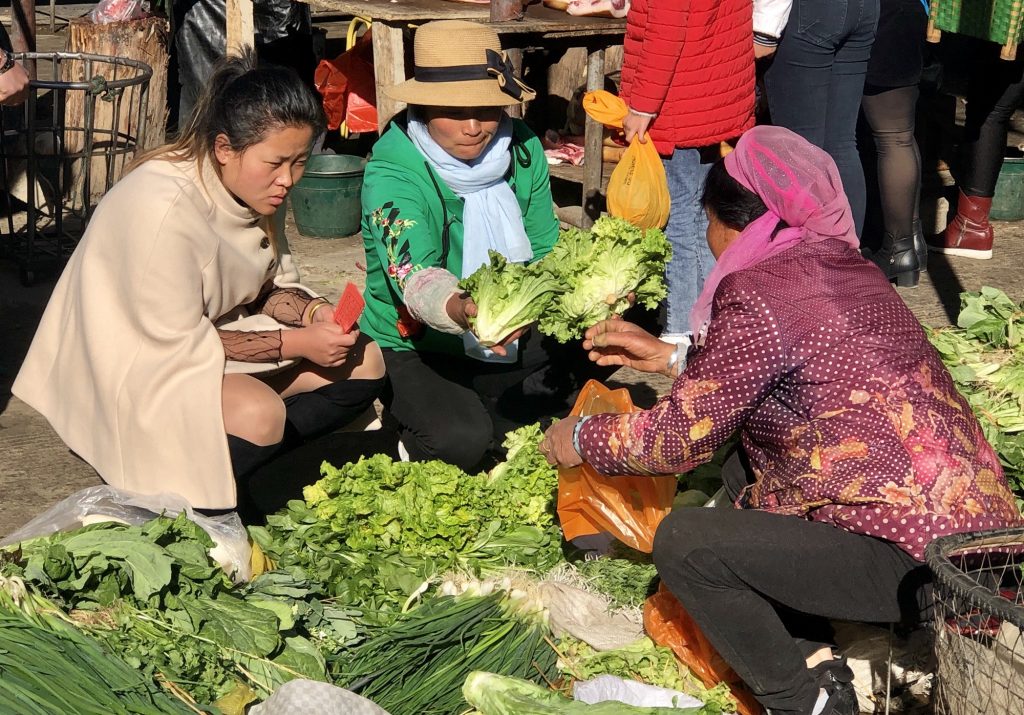
1/ 麻婆豆腐 – mápódòufǔ or ‘pock marked doufu’
This is a dish from Sichuan, and carries a large spice warning. Especially crucial to this dish are the small but deadly peppercorns which deliver great bursts of flavour alongside making your tongue tinglingly numb. But it has the vital ingredient of all Chinese cuisine – simplicity. Apart from the spice it is a mix of fried minced pork, tofu and chopped scallion onions!
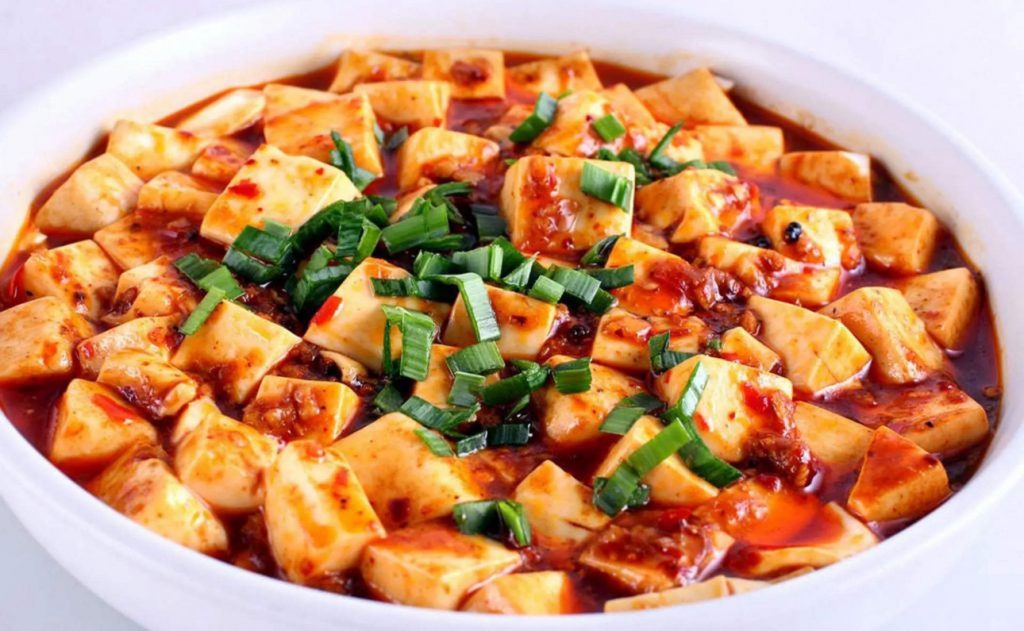
mápódòufǔ
2/ 佛跳墙 – fótiàoqiáng or ‘Buddha jumps over the Wall’ soup.
Despite its name, this delicious and health-giving soup is not at all suitable for vegetarians. Traditionally it includes chicken feet, scallops and lean cuts of pork! The essential part of this dish is the cooking method. The health factor comes from the slow cooking method, combined with a fusion of health giving herbs and spices. The end result is an invigorating soup with a range of melt in your mouth ingredients.
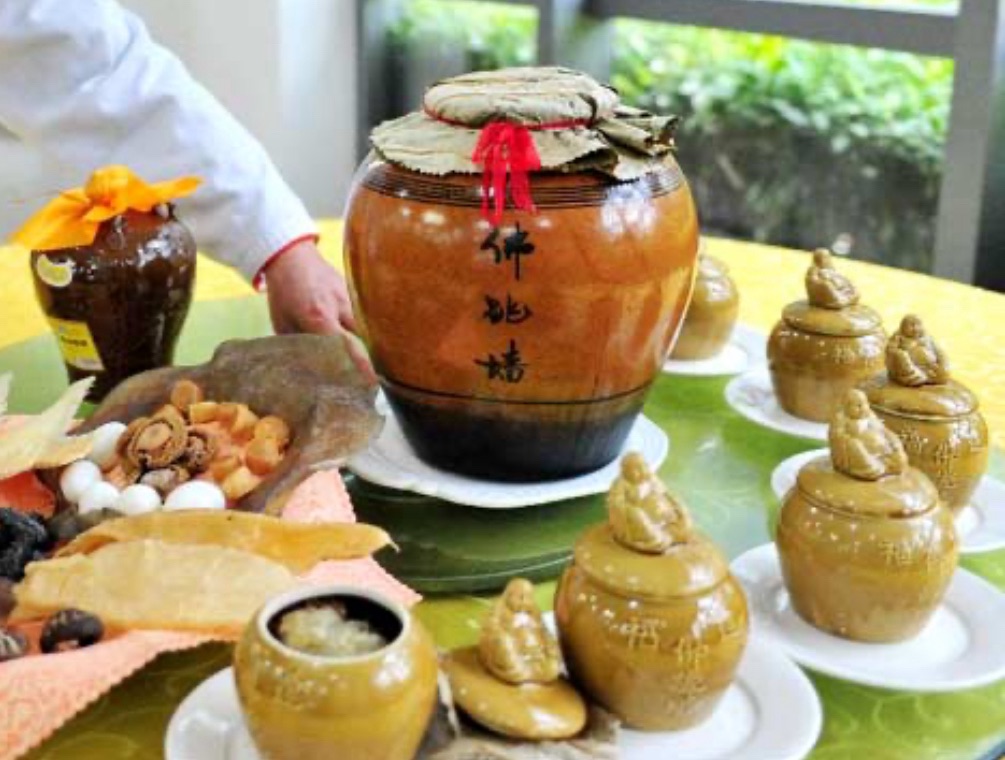
3/ Guilin Rice Noodles – 桂林米粉, Guilin mifen:
Guilin is a city in Guangxi Zhuang Autonomous Region in south China. This signature dish originated in this region but is now to be found across China. Again its essence is simplicity. In a rice noodle restaurant you will find a boiling vat of broth in which your noodles will be freshly prepared. You’ll be given a list of meat and vegetable ingredients to select to be stirred into your bowl of noodles and soup. And finally you can choose from a range of condiments, herbs and spices to adjust the flavour to your personal tastes.

Guilin Rice Noodles
4/ 大盘鸡 – dàpánjī , ‘big chicken dish’.
I love just saying the name of this wholesome, stomach lining dish which originated in Xinjiang, western China. Sadly I’m not sure if it’s available in Britain yet, but it will be a hit when it arrives because it’s based on two British favourites – bread and potatoes! Essentially dàpánjī is a stew made of chicken (up to and including the chicken head), potatoes, green peppers and a spicy gravy. It’s a speciality of the Uyghur people and if you order it in a Uyghur restaurant expect it to be served on the most delicious fresh baked flatbread which gradually soaks up all of the rich gravy and makes a totally satisfying end to the meal. Strong tip – order the mix of home-made yogurt and cumin seeds which accompany this as a side dish and fresh green cucumber.
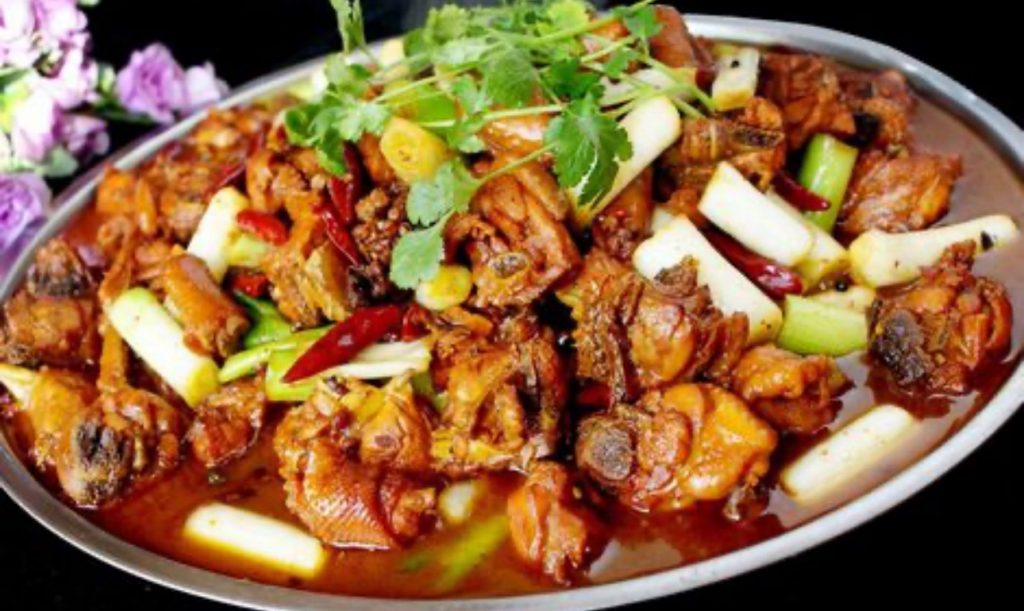
A Uyghur ‘big chicken dish’ or ‘dàpánjī’
5/ So – cue big drum roll, what am I going to serve up for you at top spot in my Top Five Chinese delicacies. Sorry to disappoint any of you who are fans of intricate dishes such as 北京烤鸭 , Běijīng kǎoyā or roast Beijing duck but my loyalty lies with a humble street food. It’s a pastry which can be filled with a range of delicious ingredients – but it’s not the famous 饺子- jiǎozi or dumplings that many of us know from Chinese festivals. It is the, to my mind, far superior southern cousin of jiǎozi called 小笼包, xiǎolóngbāo, or sometimes 小笼汤包, xiǎolóngtāngbāo which translates as ‘little basket bun’ or ‘little soup basket bun’.
History tells us that xiǎolóngbāo were first created in the 19th century in Shanghai by a restaurant owner who had the creative idea of adding a little stock around the contents of a light skinned pastry basket. The idea was pure genius. There is something almost magical about the combination of a small parcel with delicious broth and then the light but delectable pork or crab or vegetable filling. And at my favourite little xiǎolóngbāo cafe in Shanghai they serve up your little parcels of deliciousness with a tangy dipping sauce of light vinegar and delicately sliced ginger! Your tastebuds could not have more fun.
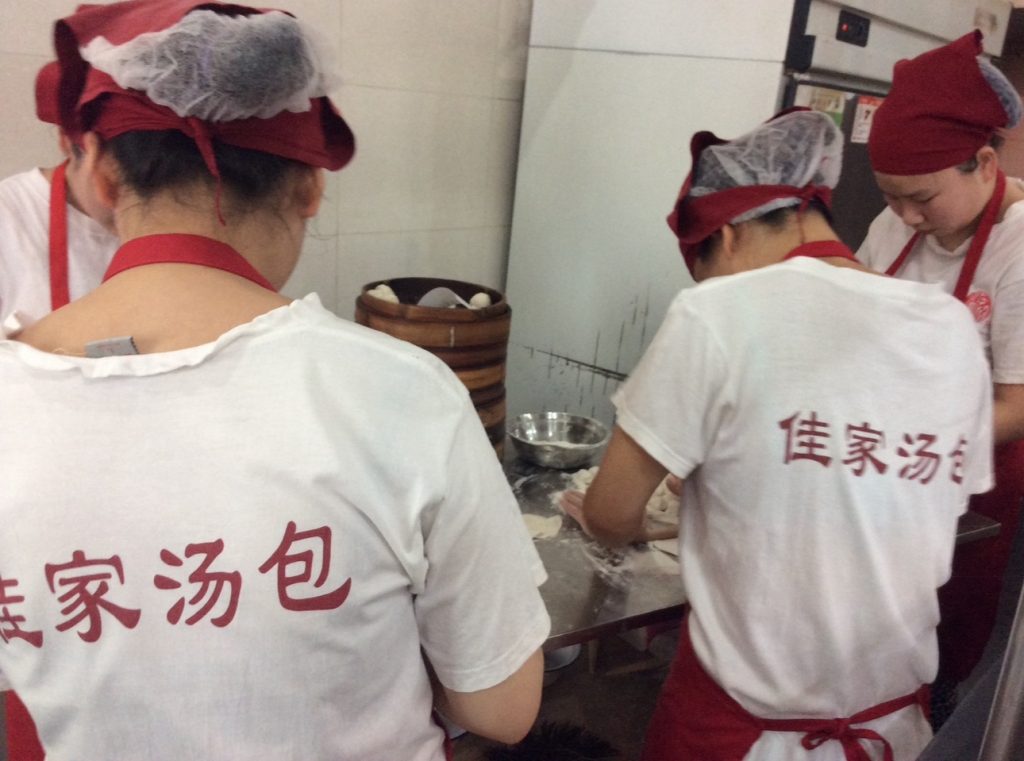
The staff at ‘Jia jia tang bao’ work their magic!
Endless cultural battles are fought over the best xiǎolóngbāo in Shanghai but for my money xiǎolóngbāo heaven is a place called ‘Jia jia tang bao’ in a side street just behind Renmin (People’s) Square. All being well I’ll be there on the weekend of 27/28th April, so join me and I’ll treat you!
So there you have it, my own very personal Top Five flavours of China. As always with these sorts of lists it’s the ones that didn’t make it that will immediately jump to your mind. So come on, let’s share our own personal favourites with each other and enrich our understanding of Chinese cuisine.
As they say in China ‘慢慢吃, mànmànchī’ or ‘slow, slow eat’, for which English has only a borrowed French phase – ‘Bon appetit!’

The author enjoys ‘just one more’ xiǎolóngbāo!
What are your personal favourites?